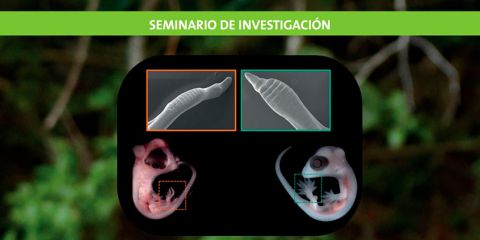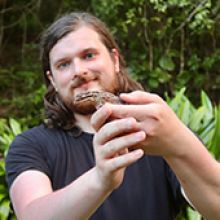
Using comparative embryology to investigating the convergent evolution of adhesive pads in lizards
One goal of evolutionary developmental biology is to understand the role of development in the repeated evolution morphologies. The adhesive toe pads of lizards are often considered a key innovation, having evolved at least 16 times in lizards. Despite their morphological diversity and functional importance, few studies have investigated the origins of these structures. Herein, I detail what we have learned about the developmental origins of adhesive pads. First, I describe the digital development of seven lizard taxa, including ancestrally padless species and independent origins of toe pads.
By comparing the development of these digits, I found striking similarities in the early development of toepad lamellae between geckos and anoles, suggesting developmental constraint in the evolution of digital adhesion. Second, I describe adhesive pad development in a species with two types of adhesive structures: toe pads and tail pads. We found similar onset and morphological patterns of early toe pads and tail pads, which are distinct from padless toes and tails, suggesting serial homology of toe and tail pads. Taken together, I demonstrate how morphologies derive and converge from ancestral patterns through embryonic development.
Conferencista

AARON GRIFFING
Ver más

AARON GRIFFING
Aaron Griffing, Ph.D. is an evolutionary and developmental biologist using geckos to study the origins of convergent morphologies. He completed his M.S. at Villanova University studying gecko osteology and his Ph.D. at Marquette University studying gecko embryology. He is currently an NSF postdoctoral research fellow at Princeton University studying evolution, development, and genomics of tetrapod lungs and gecko gliding membranes.
